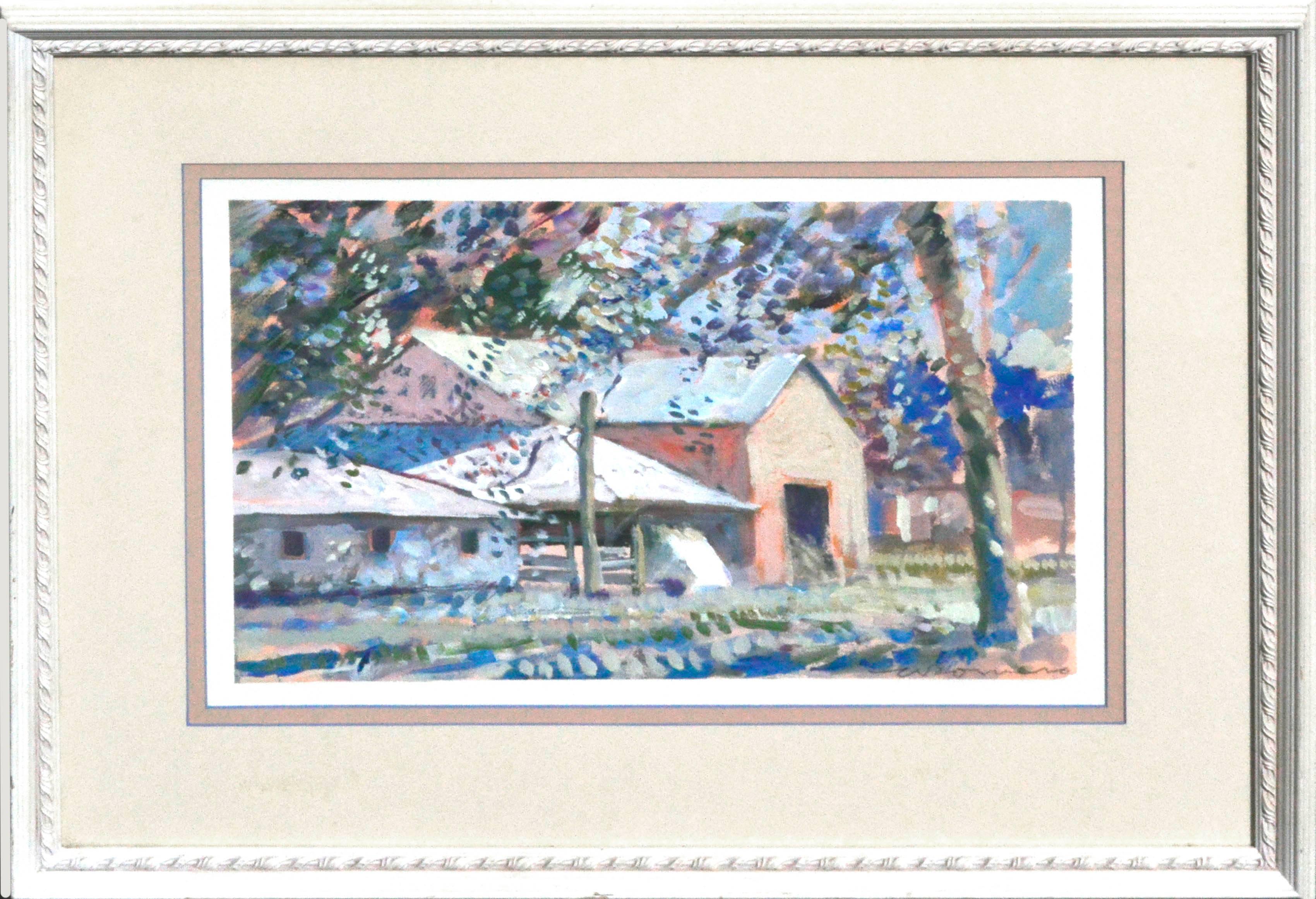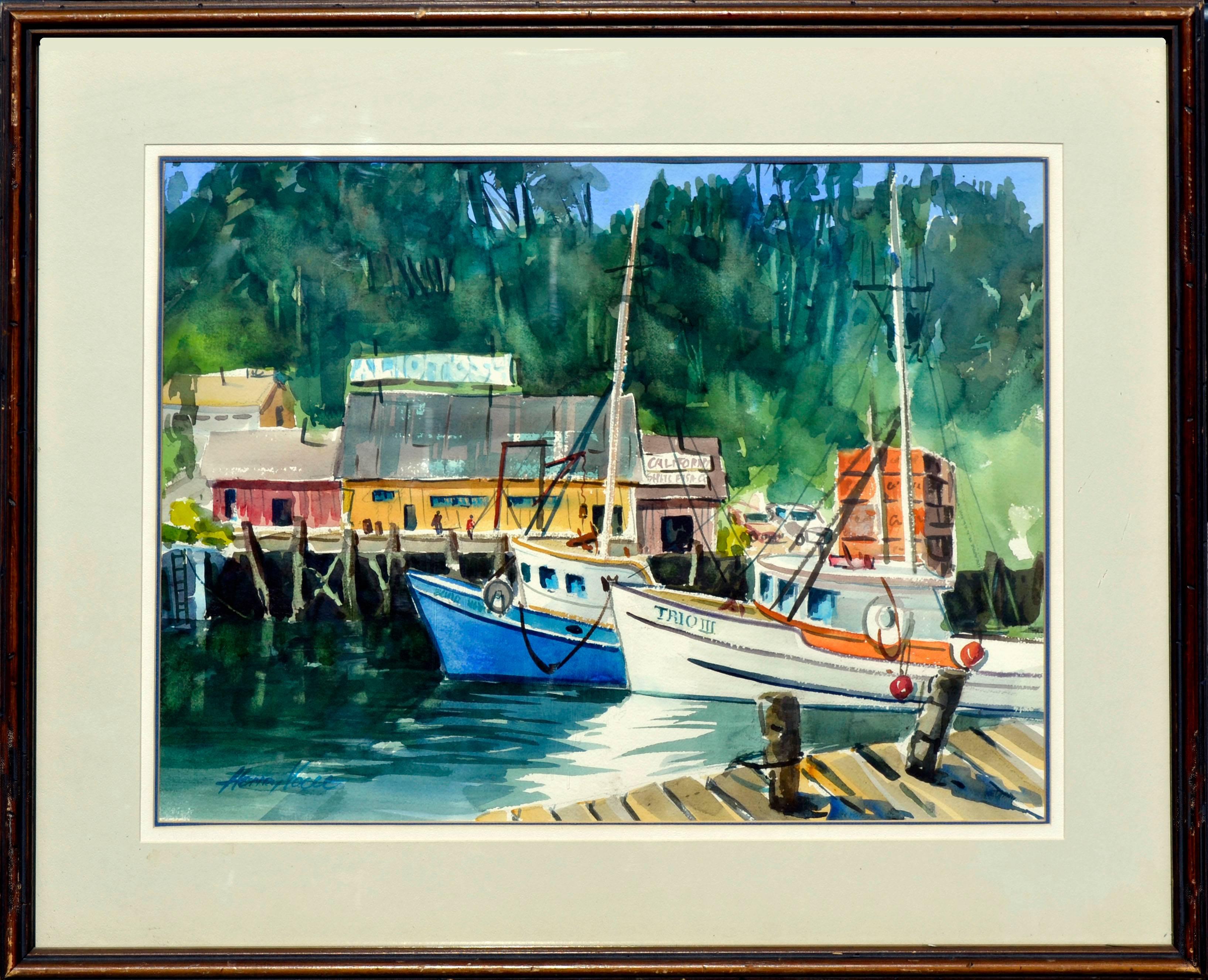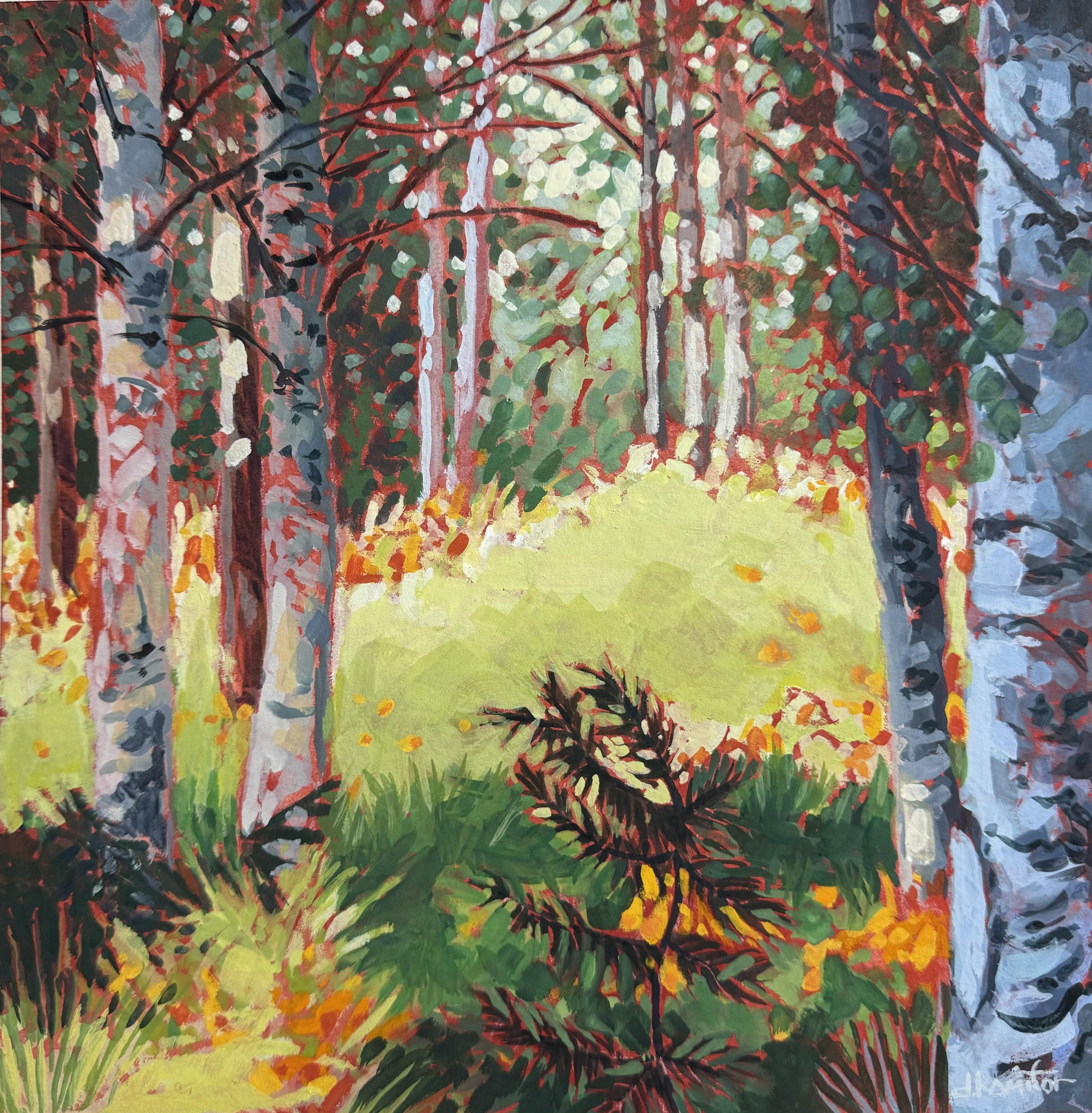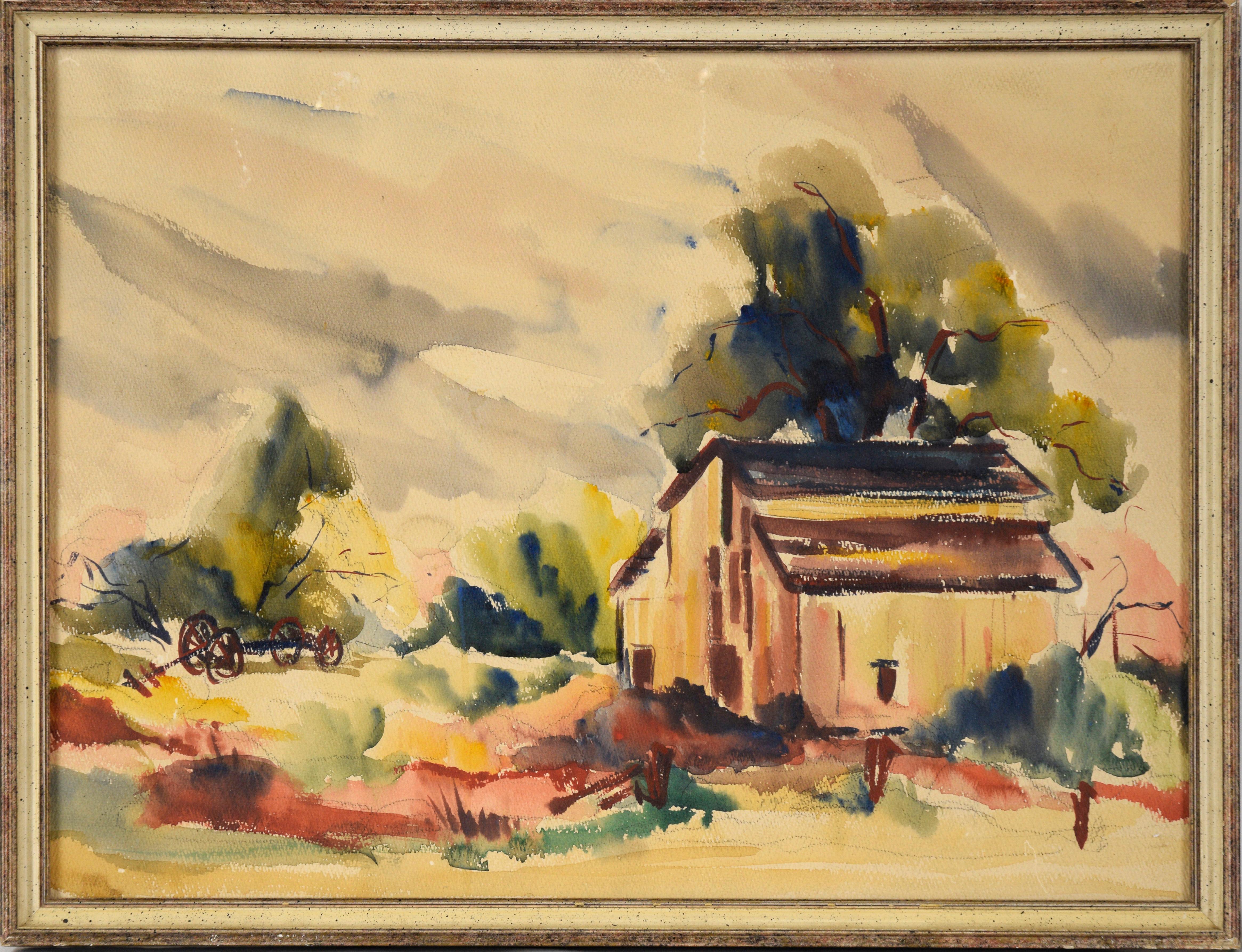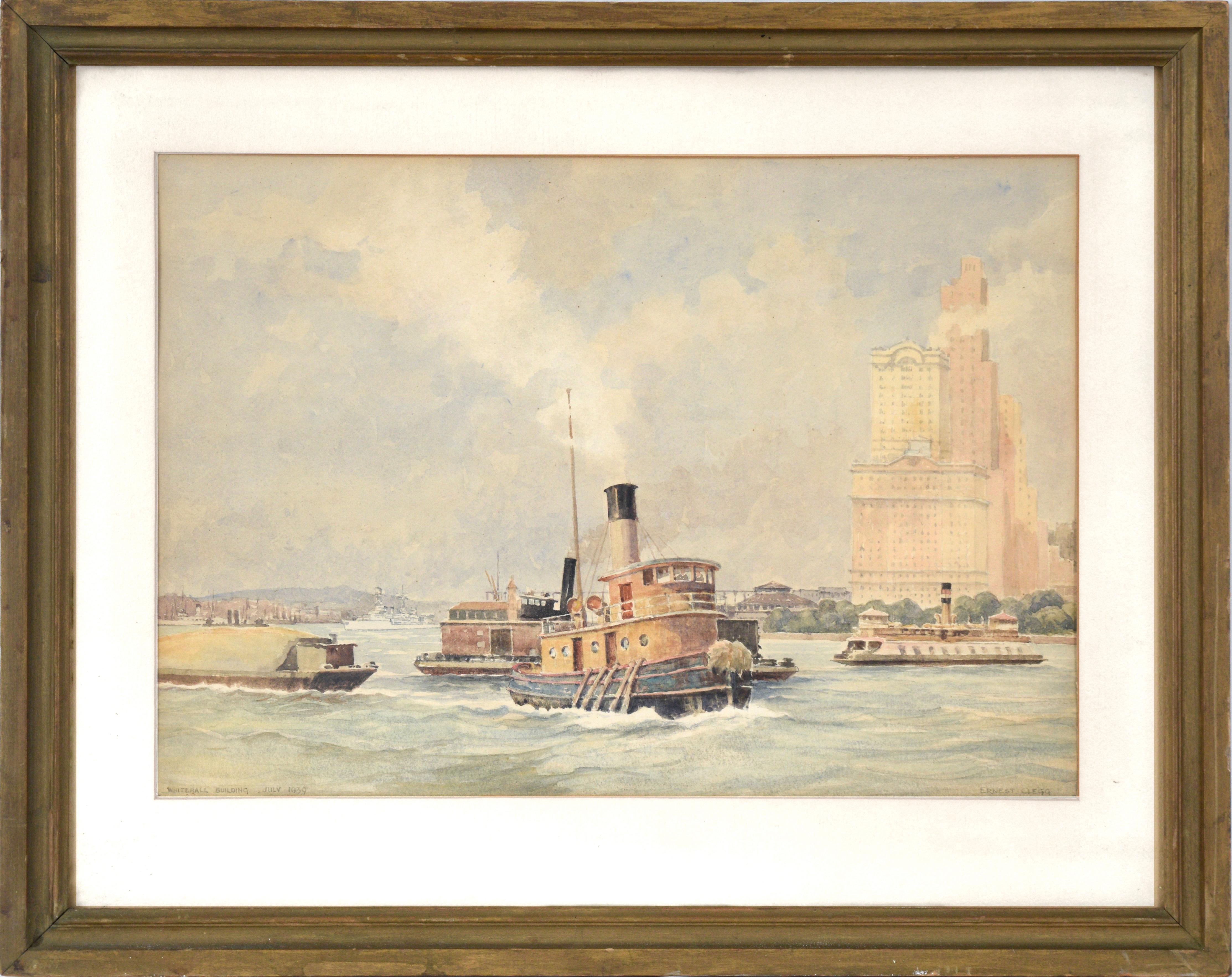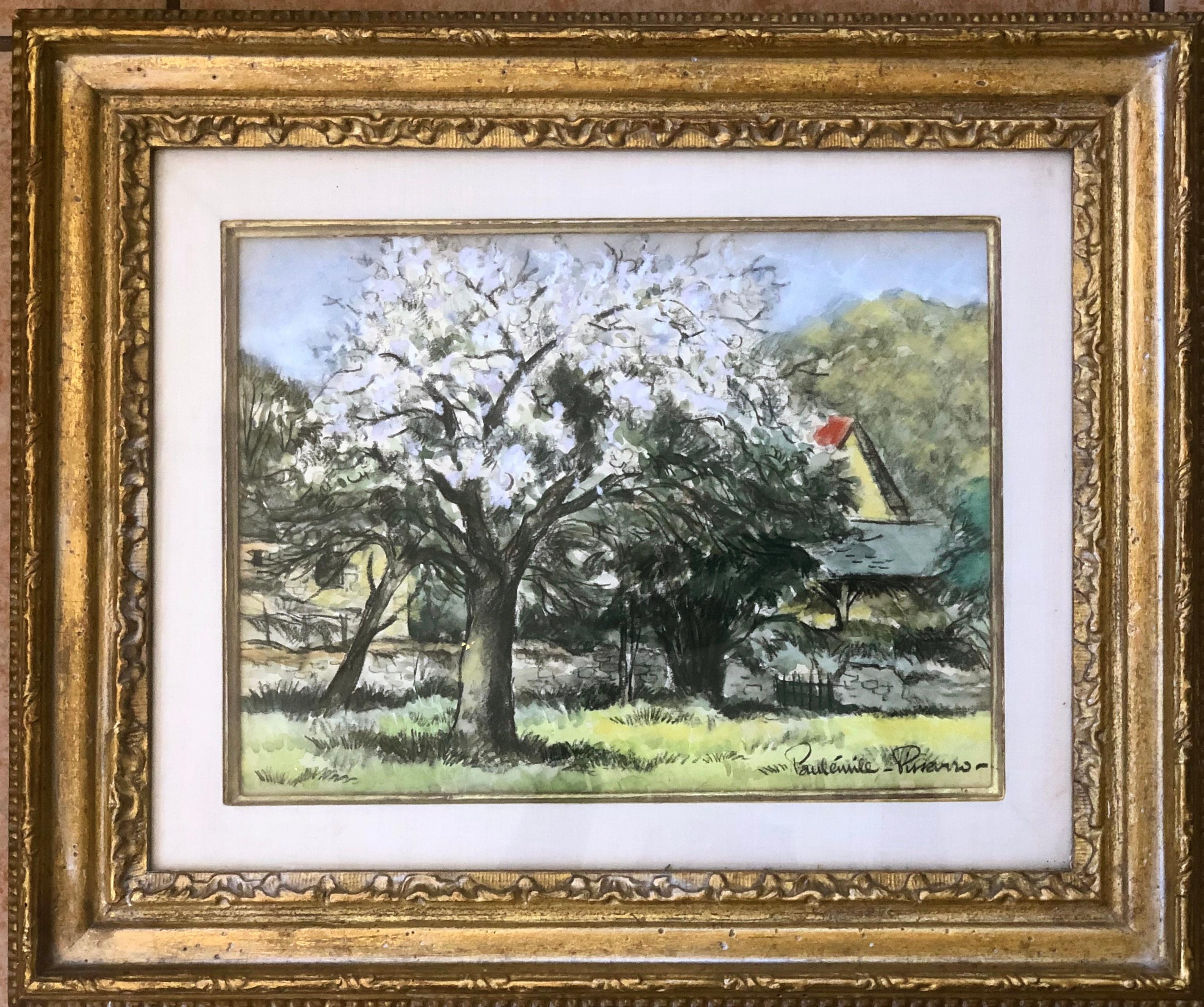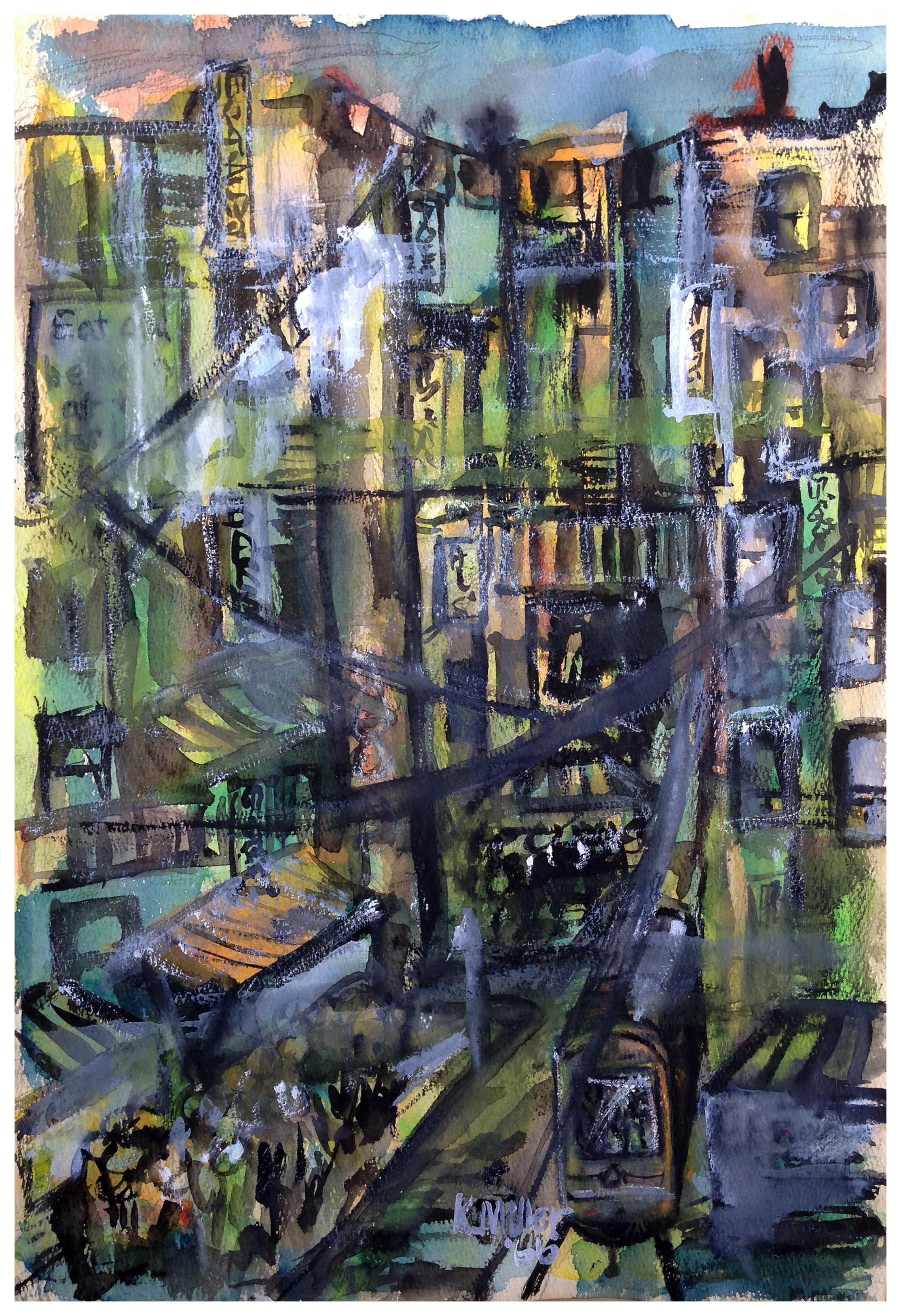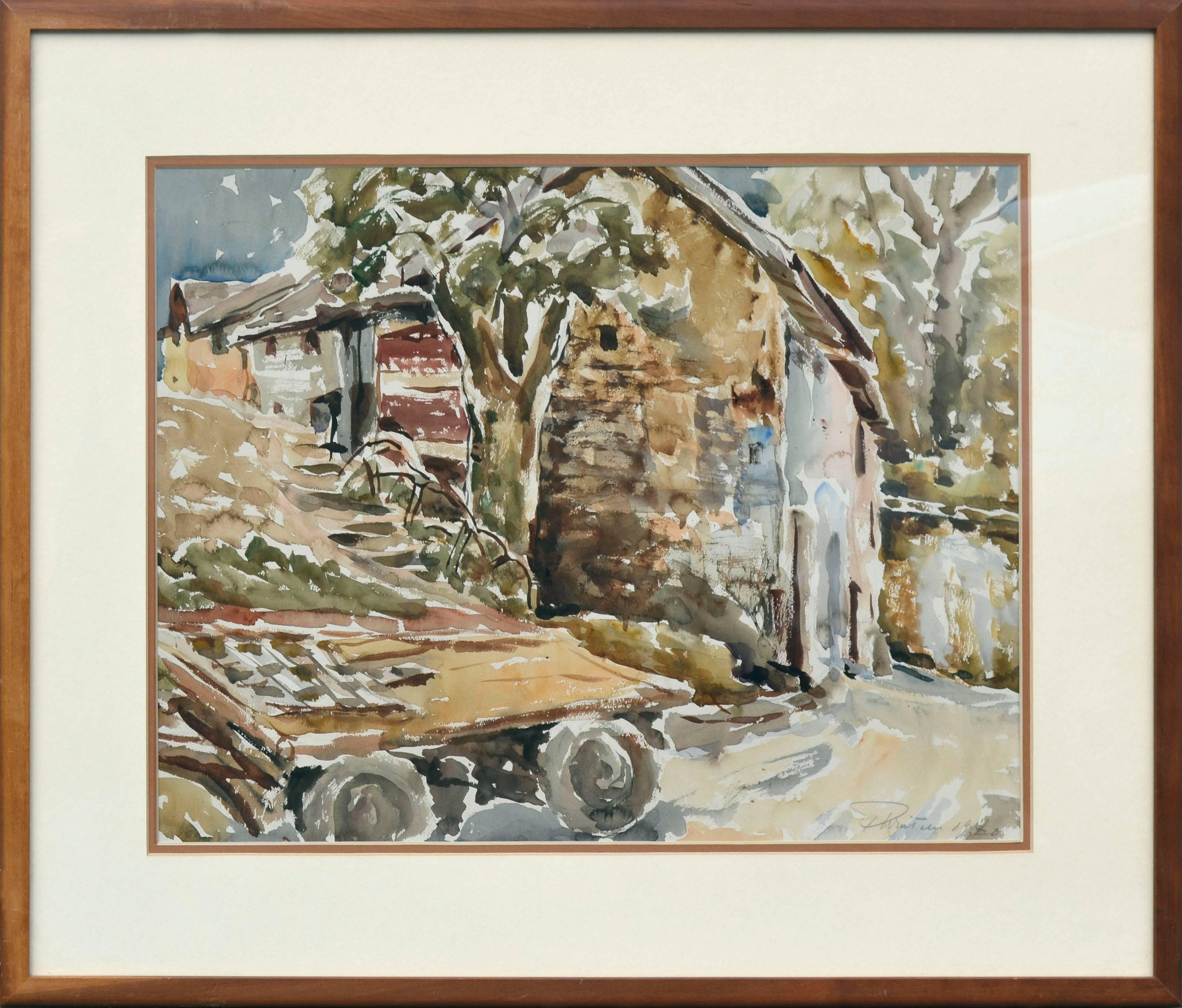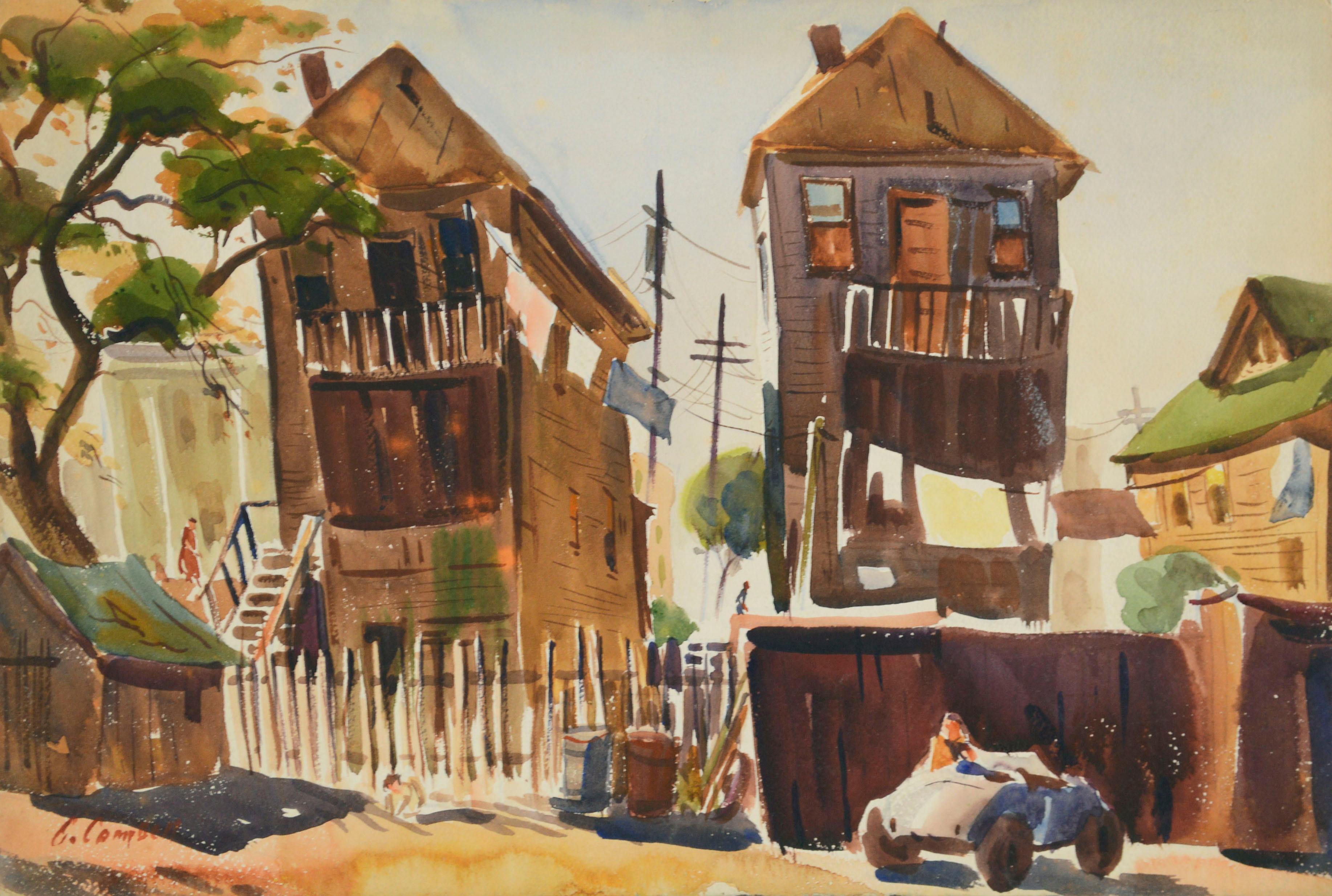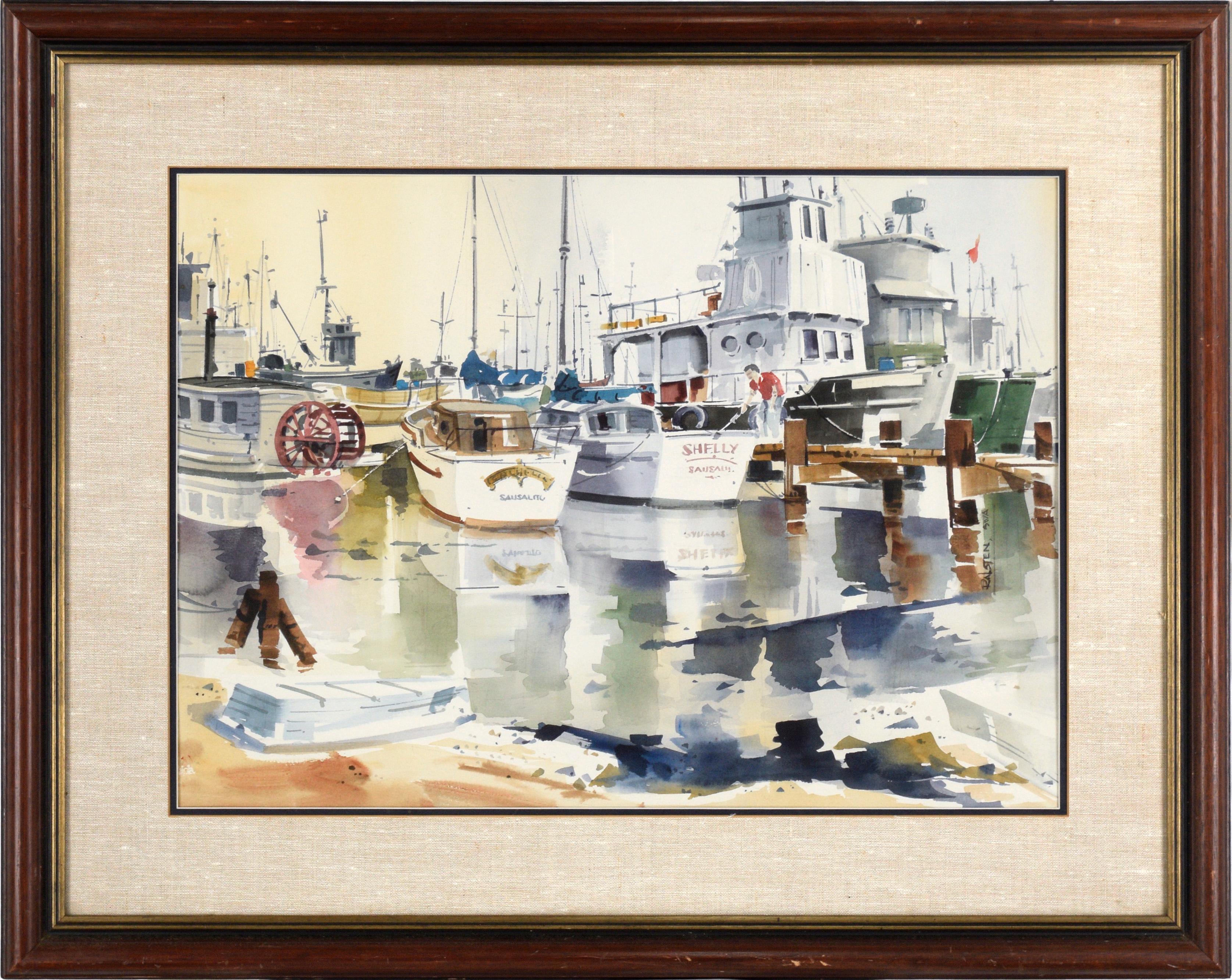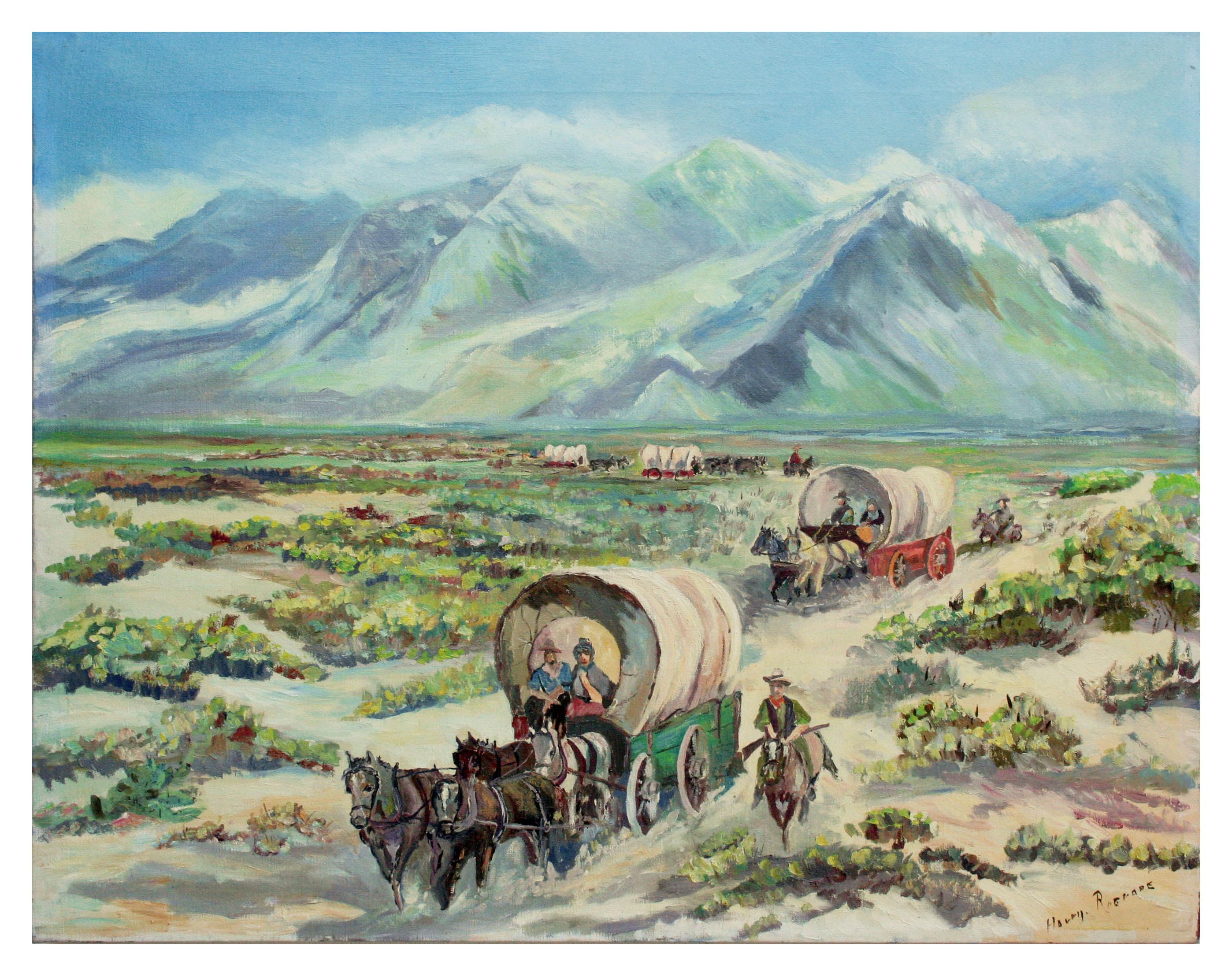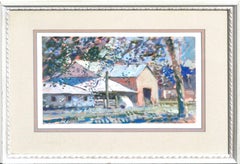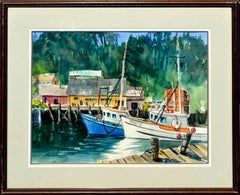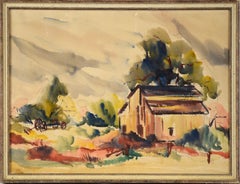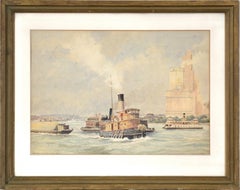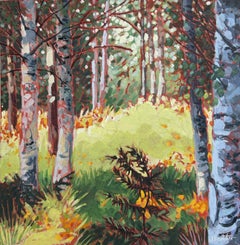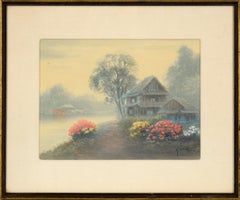
Houses at the Edge of the River - Japanese Watercolor on Paper
View Similar Items
Want more images or videos?
Request additional images or videos from the seller
1 of 14
K. SekiHouses at the Edge of the River - Japanese Watercolor on Paperearly 1900s
early 1900s
About the Item
- Creator:K. Seki (Japanese)
- Creation Year:early 1900s
- Dimensions:Height: 14.5 in (36.83 cm)Width: 17.5 in (44.45 cm)Depth: 0.75 in (1.91 cm)
- Medium:
- Movement & Style:
- Period:
- Condition:Tonal ageing to paper, as expected. One small spot of foxing. Vintage frame has wear and tear consistent with age. Imperfections will be minimized but frame may not be restored to original condition and is included "as-is".
- Gallery Location:Soquel, CA
- Reference Number:Seller: DBH80641stDibs: LU54210891562
About the Seller
5.0
Platinum Seller
Premium sellers with a 4.7+ rating and 24-hour response times
Established in 1986
1stDibs seller since 2014
2,911 sales on 1stDibs
Authenticity Guarantee
In the unlikely event there’s an issue with an item’s authenticity, contact us within 1 year for a full refund. DetailsMoney-Back Guarantee
If your item is not as described, is damaged in transit, or does not arrive, contact us within 7 days for a full refund. Details24-Hour Cancellation
You have a 24-hour grace period in which to reconsider your purchase, with no questions asked.Vetted Professional Sellers
Our world-class sellers must adhere to strict standards for service and quality, maintaining the integrity of our listings.Price-Match Guarantee
If you find that a seller listed the same item for a lower price elsewhere, we’ll match it.Trusted Global Delivery
Our best-in-class carrier network provides specialized shipping options worldwide, including custom delivery.More From This Seller
View AllWoodside Barn with Multicolor Trees Landscape
By C. Romero
Located in Soquel, CA
Beautiful colorful impressionist landscape of Bay Area rural hills of Woodside, California barn by artist C. Romero (American, 20th Century), c.1990. Signed lower right corner. Pres...
Category
1990s American Impressionist Landscape Paintings
Materials
Gouache, Archival Paper
Boats Along the Wharf Landscape
By Henry Hank Volle
Located in Soquel, CA
Beautiful watercolor landscape of boats along the wharf by Henry Hank Volle (American, 20th Century). Presented in a rustic wooden frame. Signed "Henry Volle" lower left. Artists bio...
Category
1970s American Impressionist Landscape Paintings
Materials
Paper, Watercolor
Little Wooden Barn Watercolor
Located in Soquel, CA
Beautiful watercolor painting of a wooden barn surrounded by trees with hues of vibrant greens, yellows and reds. A wagon is seen in the far off distance with grey clouds looming in ...
Category
1950s Impressionist Landscape Paintings
Materials
Paper, Watercolor
Whitehall Building, July 1939 - Harbor Seascape with Tugboat in Watercolor
Located in Soquel, CA
Whitehall Building, July 1939 - Harbor Seascape with Tugboat in Watercolor
Detailed harbor landscape by Ernest Clegg (British, 1976-1954). The Whitehall Building towers over the sce...
Category
1930s Impressionist Landscape Paintings
Materials
Paper, Watercolor
Mid Century Abstracted Urban Cityscape
Located in Soquel, CA
Wonderful mid century modern abstracted figurative cityscape watercolor by Karen Miller (American, 20th century). Signed and dated lower right "K. Miller ...
Category
1960s American Impressionist Landscape Paintings
Materials
Paper, Watercolor
1940's California Mission Landscape
Located in Soquel, CA
Watercolor of an old California mission. Signed lower right illegibly and dated 1940. Displayed in a brown wood frame with double matting. Shipped w...
Category
1940s American Impressionist Landscape Paintings
Materials
Paper, Watercolor
You May Also Like
"Gloucester Harbor at Sunset, " John Hare, Cape Ann, New England Watercolor View
Located in New York, NY
John Hare
Gloucester Harbor at Sunset, Massachusetts
Signed lower right
Watercolor on paper
16 x 12 inches
John Cuthbert Hare, 1908-1978, was a watercolorist who painted boats, seascapes and harbor scenes. He was primarily associated New England, especially Cape Cod, Massachusetts where he spent his summers from 1938 to 1965. However, he was in Florida where he was a member of the St. Augustine Art Association, and other locations on the East Coast.
It is likely Hare was born in New York City. He first studied commercial art in Brooklyn at the Pratt Institute and also studied at the Art Students League in Manhattan. He worked for Hearst newspapers corporation, and in 1933 married. In the next few years, he and his wife traveled extensively, camping and painting and exhibiting his work in galleries.
In 1935, they visited St. Augustine and an exhibition of his watercolors was held there in the old bank...
Category
Mid-20th Century Impressionist Landscape Drawings and Watercolors
Materials
Paper, Watercolor
"The Joy Of Light And Shadow" (2024) by Deb Komitor, Original Painting
By Deb Komitor
Located in Denver, CO
"The Joy Of Light And Shadow" (2024) by Deb Komitor (United States) is a handmade landscape oil painting that is ready to hang.
Deb Komitor was born and raised in Ohio and now resi...
Category
21st Century and Contemporary Impressionist Figurative Paintings
Materials
Paper, Gouache, Board
Landscape With Blooming Trees
By Paul Emile Pissarro
Located in Lake Worth Beach, FL
Landscape with Blooming Trees
Paul-Emile Pissarro 1884-1972 French
Paper size 9.5x12.5 under glass framed 12x16x1 signed, very good condition. The backi...
Category
1940s Impressionist Drawings and Watercolor Paintings
Materials
Paper, Gouache, Pastel
"Rock Cove" (2023) Original Painting by Barbara Hack, Seascape
Located in Denver, CO
"Rock Cove" by Barbara Hack is an original landscape painting depicting a peaceful cove with beautiful blue waters. This piece is framed and ready to hang.
Barbara Hack’s work is a...
Category
2010s Impressionist Figurative Paintings
Materials
Oil, Paper, Watercolor
$700 Sale Price
22% Off
"074 - Plein Air-Lafayette, CO" (2022) By Judd Mercer, Gouache Painting
By Judd Mercer
Located in Denver, CO
Judd Mercer's (US based) "074 - Plein Air-Lafayette, CO" is a gouache painting depicting a landscape.
Artist bio/statement
Judd Mercer is a contemporary landscape painter and Color...
Category
2010s Impressionist Landscape Paintings
Materials
Paper, Gouache
"Train Station, " Max Kuehne, Industrial City Scene, American Impressionism
By Max Kuehne
Located in New York, NY
Max Kuehne (1880 - 1968)
Train Station, circa 1910
Watercolor on paper
8 1/4 x 10 1/4 inches
Signed lower right
Provenance:
Private Collection, Illinois
Max Kuehne was born in Halle, Germany on November 7, 1880. During his adolescence the family immigrated to America and settled in Flushing, New York. As a young man, Max was active in rowing events, bicycle racing, swimming and sailing. After experimenting with various occupations, Kuehne decided to study art, which led him to William Merritt Chase's famous school in New York; he was trained by Chase himself, then by Kenneth Hayes Miller. Chase was at the peak of his career, and his portraits were especially in demand. Kuehne would have profited from Chase's invaluable lessons in technique, as well as his inspirational personality. Miller, only four years older than Kuehne, was another of the many artists to benefit from Chase's teachings. Even though Miller still would have been under the spell of Chase upon Kuehne's arrival, he was already experimenting with an aestheticism that went beyond Chase's realism and virtuosity of the brush. Later Miller developed a style dependent upon volumetric figures that recall Italian Renaissance prototypes.
Kuehne moved from Miller to Robert Henri in 1909. Rockwell Kent, who also studied under Chase, Miller, and Henri, expressed what he felt were their respective contributions: "As Chase had taught us to use our eyes, and Henri to enlist our hearts, Miller called on us to use our heads." (Rockwell Kent, It's Me O Lord: The Autobiography of Rockwell Kent. New York: Dodd, Mead and Co., 1955, p. 83). Henri prompted Kuehne to search out the unvarnished realities of urban living; a notable portion of Henri's stylistic formula was incorporated into his work.
Having received such a thorough foundation in art, Kuehne spent a year in Europe's major art museums to study techniques of the old masters. His son Richard named Ernest Lawson as one of Max Kuehne's European traveling companions. In 1911 Kuehne moved to New York where he maintained a studio and painted everyday scenes around him, using the rather Manet-like, dark palette of Henri.
A trip to Gloucester during the following summer engendered a brighter palette. In the words of Gallatin (1924, p. 60), during that summer Kuehne "executed some of his most successful pictures, paintings full of sunlight . . . revealing the fact that he was becoming a colorist of considerable distinction." Kuehne was away in England the year of the Armory Show (1913), where he worked on powerful, painterly seascapes on the rocky shores of Cornwall. Possibly inspired by Henri - who had discovered Madrid in 1900 then took classes there in 1906, 1908 and 1912 - Kuehne visited Spain in 1914; in all, he would spend three years there, maintaining a studio in Granada. He developed his own impressionism and a greater simplicity while in Spain, under the influence of the brilliant Mediterranean light. George Bellows convinced Kuehne to spend the summer of 1919 in Rockport, Maine (near Camden). The influence of Bellows was more than casual; he would have intensified Kuehne's commitment to paint life "in the raw" around him.
After another brief trip to Spain in 1920, Kuehne went to the other Rockport (Cape Ann, Massachusetts) where he was accepted as a member of the vigorous art colony, spearheaded by Aldro T. Hibbard. Rockport's picturesque ambiance fulfilled the needs of an artist-sailor: as a writer in the Gloucester Daily Times explained, "Max Kuehne came to Rockport to paint, but he stayed to sail." The 1920s was a boom decade for Cape Ann, as it was for the rest of the nation. Kuehne's studio in Rockport was formerly occupied by Jonas Lie.
Kuehne spent the summer of 1923 in Paris, where in July, André Breton started a brawl as the curtain went up on a play by his rival Tristan Tzara; the event signified the demise of the Dada movement. Kuehne could not relate to this avant-garde art but was apparently influenced by more traditional painters — the Fauves, Nabis, and painters such as Bonnard. Gallatin perceived a looser handling and more brilliant color in the pictures Kuehne brought back to the States in the fall. In 1926, Kuehne won the First Honorable Mention at the Carnegie Institute, and he re-exhibited there, for example, in 1937 (Before the Wind). Besides painting, Kuehne did sculpture, decorative screens, and furniture work with carved and gilded molding. In addition, he designed and carved his own frames, and John Taylor Adams encouraged Kuehne to execute etchings. Through his talents in all these media he was able to survive the Depression, and during the 1940s and 1950s these activities almost eclipsed his easel painting. In later years, Kuehne's landscapes and still-lifes show the influence of Cézanne and Bonnard, and his style changed radically.
Max Kuehne died in 1968. He exhibited his work at the National Academy of Design, the Art Institute of Chicago, the Carnegie Institute in Pittsburgh, the Memorial Art Gallery of the University of Rochester, and in various New York City galleries. Kuehne's works are in the following public collections: the Detroit Institute of Arts (Marine Headland), the Whitney Museum (Diamond Hill...
Category
1910s American Impressionist Landscape Drawings and Watercolors
Materials
Paper, Watercolor
Recently Viewed
View AllMore Ways To Browse
Hedge House
Sunset River Painting
Bp Painting
Edinburgh Landscape
Great Camp
Oil Painting With Jewels
Railway Sign
Texas Western Painting
19 Century American Portraits
1940 California Landscape
Made In Vermont
Mystic Painting
Oil Painting Of George Washington
Santa Cruz Vintage Artist
Vintage Beach Signs Wood
Vintage Woodstock
19th Century Western Paintings
Monet Gold
